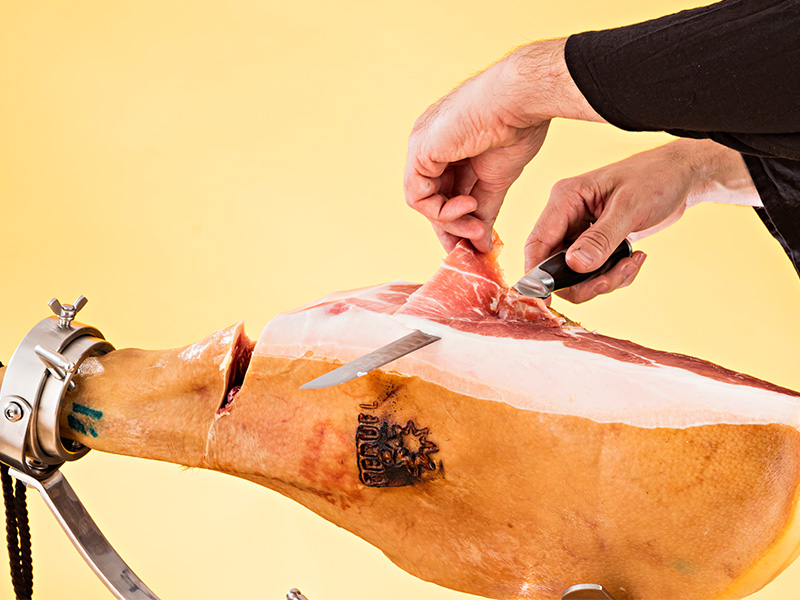
The simple answer is no. Although both products come from the same animal and they are made in a similar way, there are clear differences in their morphology that mean that they should not be cut in the same way. In today’s post, we are going to provide some basics on the characteristics that make these products differ from each other.
First of all, we should clarify that, when we talk about ham, we are referring to the back leg of the pig, while the shoulder corresponds to the front leg. Just like other mammals, the front and back limbs have different morphology which can be noted in their flavour, in how they are cut and above all, their yield.
Main differences
The most obvious is doubtlessly the size. The front limb is quite a lot smaller than the back. It is usually 60 to 70 cm long, depending on the type of animal it comes from (white, Iberian or crossed pig). A ham usually measures between 80 and 90 cm. Furthermore, the weight of a shoulder is usually around 5.5 or 6 kg, while a ham is usually 8 kg, always depending on the type of ham or shoulder and the manufacturer (we specifically like a big ham).
Given its length and its volume in general, there is a substantial difference in the quantity of meat that we are going to extract from both. The ham not only has more total muscle mass but the ratio of meat to bone is also much higher than for shoulder. Consequently, more meat can be taken from the ham than the shoulder. Firstly, depending greatly on the piece and the cutter’s skill, it is possible to obtain between 45% and 50% yield. On the shoulder, this percentage would be 35-40%.
There are also differences regarding its flavour. The greater presence of fat in the shoulder, and the proximity of its meat to the bone in general gives it a more intense flavour. However, the longer curing of ham, given its greater size, provides more nuances that turn it into a more complex product organoleptically.
However, it is perhaps the shape of the bones, S-shaped in the shoulder and T-shaped in ham, that is the greatest difference we are going to find when cutting them.
So, how do we cut shoulder?
Although, as we have already said, they are not cut in the same way, the tools we use are the same: ham stand, paring knife and a good ham knife preferably shorter than the standard (23 or 24 cm).
Although the ham offers different options when deciding where to start, our recommendation with the shoulder is that you always start with the part of the ham with the least lean meat, as high as possible on the quarters (separating the meat from the bone using the paring knife) and parallel to the humerus. This is the simplest way of starting, placing the hoof downwards, particularly if you have a basic ham stand. Don’t worry if the first slices aren’t the perfect size. Little by little, the cutting surface will increase, and the slices will get larger.
Just like with ham, the main difficulty lies in navigating the bones as they appear. However, as we have said, the greater proportion and size of these bones in the shoulder are going to make it more difficult to cut. If we find the tibia, fibula, femur and hip bone or coxal bone (belonging to a leg) in a ham, the shoulder gives us bones like an arm or an upper limb: radius, ulna, humerus or scapula. The latter is a large, flat bone that lets you show off your skill with the knife if you want to get maximum yield and some tasty slices.
In any case, and as a picture is worth a thousand words, take a look at the following link to Jamón Lovers where the ham cutter and speaker, Roberto González Santalla, will explain how to cut and make the most out of a shoulder.


